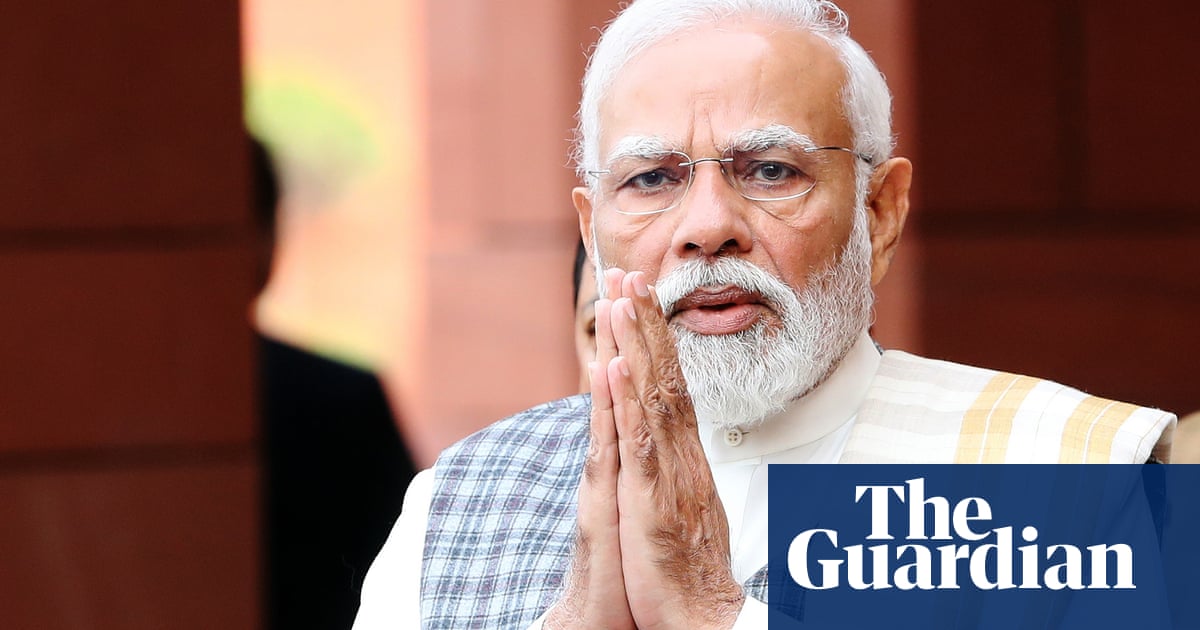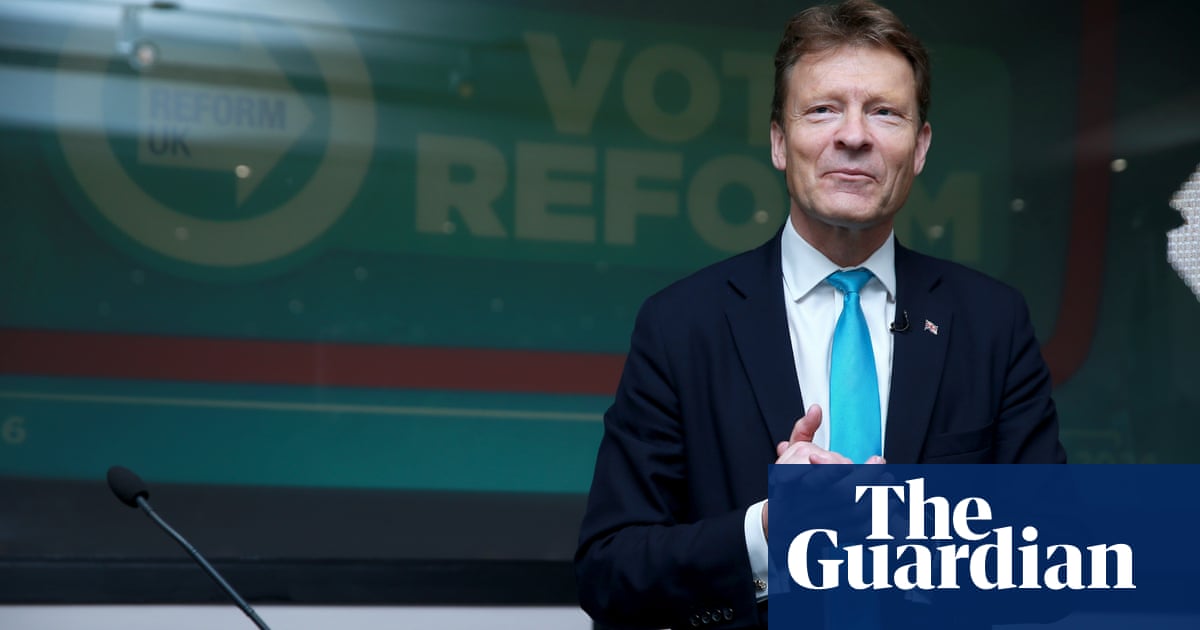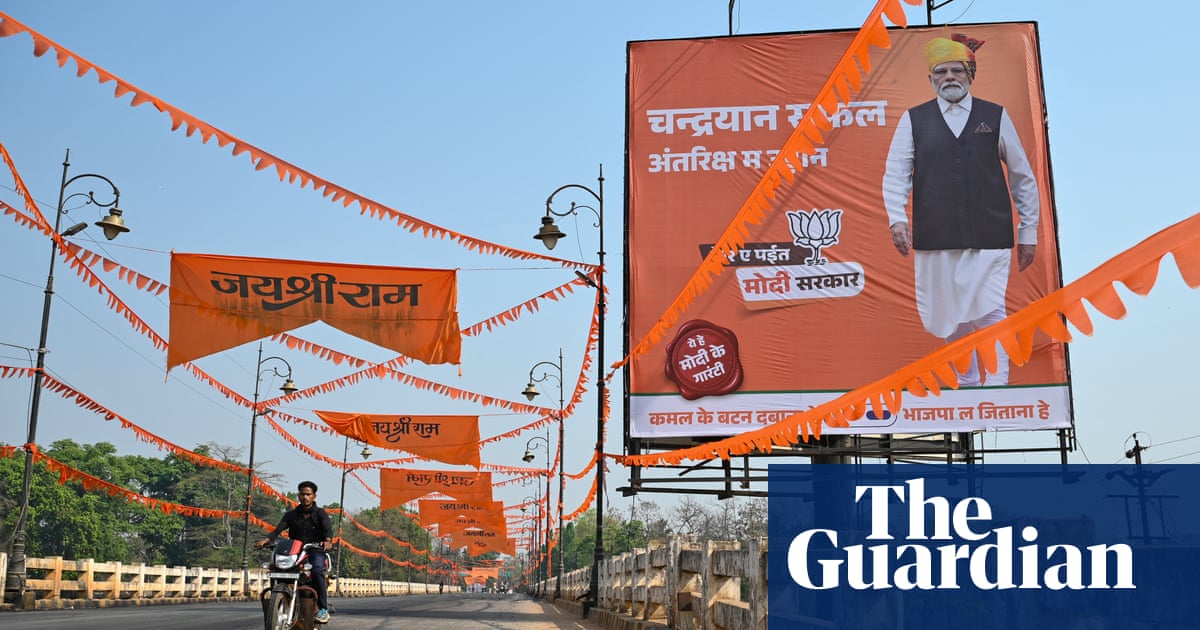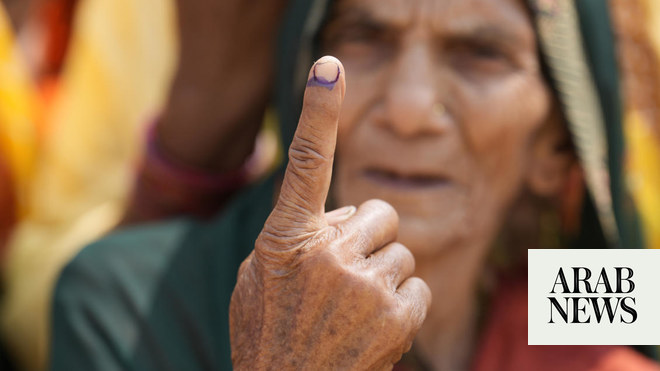
India’s prime minister, Narendra Modi, has cut a confident figure in recent weeks. As his Bharatiya Janata party (BJP) swept three major state elections in December, Modi did not hold back from predicting that “this hat-trick has guaranteed the 2024 victory”.
It was a sign that with less than six months to go before the general election, in which Modi will be seeking a third term in power, campaign season has begun with gusto.
In India’s current political landscape, the consensus among political analysts is that a win for Modi and the BJP is the most plausible outcome.
The prime minister’s popularity as a political strongman, alongside the BJP’s Hindu nationalist agenda, continues to appeal to the large Hindu majority of the country, particularly in the populous Hindi belt of the north, resulting in the widespread persecution of Muslims.
At state and national level, the apparatus of the country has been skewed heavily towards the BJP since Modi was elected in 2014. He has been accused of overseeing an unprecedented consolidation of power, muzzling critical media, eroding the independence of the judiciary and all forms of parliamentary scrutiny and accountability and using government agencies to pursue and jail political opponents.
While regional opposition to the BJP is strong in pockets of south and east India, nationally it is seen as fragmented and weak. The main opposition Indian National Congress party won the state election in Telangana this month but is in power in only three states overall and is perceived as hierarchical and riddled with infighting.
The recently formed coalition of all major opposition parties – which goes by the acronym INDIA – has yet to unite on crucial issues, though it has vowed to fight the BJP collectively.
“The general sense is that a BJP win is almost an inevitability at this stage,” said Neelanjan Sircar, a fellow at the Centre for Policy research. “The question is more: what factors will shape the scale of the victory?”
The BJP has begun a nationwide pre-election push. A roadshow, titled Viksit Bharat Sankalp Yatra, will see thousands of government officers deployed to towns and villages across the country over the next two months, tasked with speaking about the BJP’s successes over the past nine years – despite criticisms of politicising government bureaucracy and resources for campaigning purposes.
The Ministry of Defence is also setting up 822 “selfie points” at war memorials, defence museums, railway stations and tourist attractions where people can take photos of themselves with a Modi cutout.
The BJP’s recent domination in the states of Rajasthan, Madhya Pradesh and Chattisgarh appeared to reaffirm the popularity of Modi. Though the prime minister has little to do with state elections, which are designed to elect local assembly members, the BJP strategically put Modi front and centre of their campaigns in the place of local leaders, where he appeared at dozens of rallies to directly appeal to voters and present himself as the embodiment of the party.
Modi’s messaging in these campaign speeches combined an emphasis on the BJP’s paternalistic welfare schemes – which provide large amounts of free food and cash handouts – with nationalistic and religiously communal rhetoric, offering a glimpse of how the BJP intends to fight the election on a national scale.
Modi’s role in elevating India as a global power – be that in international politics or in the recent its moon landing in August – it was the first country to successfully land a spacecraft near the lunar south pole – was also prominent.
Asim Ali, a political scientist, said the recent state election campaigns in the north were “some of the most religiously polarising I have seen” as the BJP played heavily on Hindutva (Hindu nationalist) sentiments to win the majority vote.
In Rajasthan, Modi repeatedly evoked an incident where a Hindu tailor was murdered by extremist Muslims to claim that the opposition Congress party, which ruled the state, was “sympathetic to terrorists” and that it was their appeasement of Muslims that had led to the killing.
The BJP’s candidates included four Hindu priests, some with very hardline views, but no Muslims. In the tribal dominated state of Chhattisgarh, the BJP played on fears of forced conversions of tribal people away from Hinduism.
Modi was brought to power in 2014 largely on the back of an anti-incumbency wave while his re-election victory in 2019 was all but secured after India carried out airstrikes on Pakistan, after a terrorist incident a few months before the polls, resulting in a storm of national security sentiment in his favour.
However, whether the BJP will win the same sort of sweeping parliamentary majority it secured in 2019 is unclear. Its position in certain crucial states, such as Bihar and Maharashtra, is uncertain and the party’s weakness on economic problems, particularly jobs and inflation, could also affect voting.
Ali was among those who feared a Hindu-Muslim divide would be stirred up further to become “the dominant issue, at least in the Hindi heartland”.
“Hindu-Muslim communalisation has become completely normalised, not just through political campaigning but by the television news channels and the messages people see on social media and WhatsApp,” said Ali. “It can be activated by the BJP at their grassroots at any time. Just one or two slogans from Modi and other senior BJP leaders, a few coded communal dogwhistles, and people get the message.”
Indeed, one of the biggest issues likely to dominate the BJP’s agenda pre-election is the long-awaited opening of the Ram Mandir, a grand Hindu temple that has been built in the place of a demolished mosque. Construction of the building, in the north Indian town of Ayodhya, has long been a focal point of the Hindu nationalist movement in India, and the fanfare around Modi’s inauguration of the temple later this month in January is expected to be a national event.
Baijayant Panda, national vice president of the BJP, said the party was very confident about the parliamentary elections. He credited the confidence in part to “the Modi premium”, which meant the BJP tended to perform better in national than state elections because of the “stratospheric popularity” of the prime minister.
“On the ground, there’s a huge surge of optimism, even in areas which we haven’t traditionally won,” said Panda. “Having had this kind of victory in the state elections completely cements our position.”
Exactly what a third term for Modi would mean for India, particularly if it was another outright majority, was a cause for concern among some analysts and human rights groups. While Panda said it would be defined by economic success, and India becoming the world’s third largest economy, others feared a continued erosion of democracy and the rights of the Muslim minority, who exceed 200 million.
Ashutosh Varshney, the director of the Center for Contemporary South Asia at Brown University in the US, said he expected the rights of Muslims to continue to come under attack.
He warned that a situation similar to the Jim Crow laws, which existed in southern American states in the late 19th and early 20th centuries and disenfranchised black people on the basis of race, could become a reality in India under a third Modi term.
“If Modi comes back to power we can imagine a scenario of a Jim Crow-style Hindu nationalist order in BJP-ruled states,” said Varshney. “It will establish Hindu supremacy, deprive Muslims of equality and create a secondary citizenship for Muslims, which will likely eventually remove their right to vote.”
Panda pushed back against allegations of BJP communalism. “I dare anyone to point out where a minority, whether a Muslim or a Christian or Buddhist or a Sikh has been discriminated against in the governance of India, you will not find a single example,” he said.












